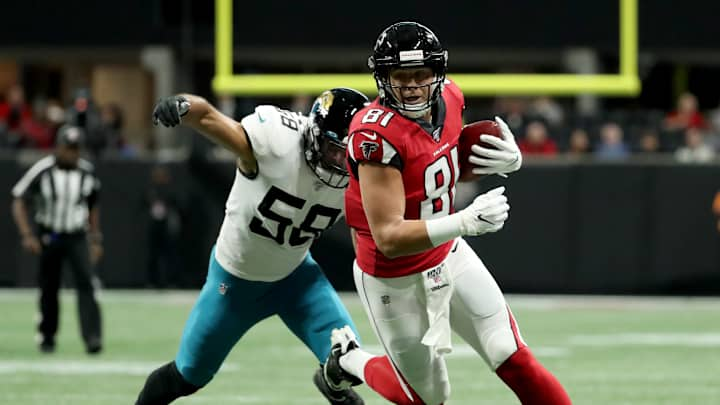Tight End Centered Offense Allows Cleveland Browns True Freedom With Wide Receivers

There are so many benefits to having tight ends as the focal point of a team's passing game. Premium tight ends cost a little over half of what the top receivers do, they provide mismatches as teams typically don't have great answers for 6'4" 250 pound players that can run and they can do a lot to help the running game. One other benefit of having tight ends as an integral part of the passing game is the freedom it allows for teams to have with wide receivers.
With Austin Hooper and David Njoku as a big part of their offense, the Cleveland Browns are free to simply focus on the best receivers they can put on the field. They aren't being forced to consider attributes like size or role as much because so often, the tight ends can be the X and Y of the offense, enabling the receivers to be the Z and H, depending on the terminology someone prefers.
The majority of the time, the receivers can be off the line of scrimmage, enabling them to be motioned, play on the boundary, in the slot or operate from bunch type looks. This type of offense allows the coaching staff the freedom to simply find the best way to utilize their receivers.
The Kansas City Chiefs and New England Patriots are two examples of what having tight ends at the center of the passing game allow. Travis Kelce and Rob Gronkowski are obviously outstanding players, but their compliments in those offenses are Tyreek Hill and Julian Edelman respectively.
Kelce and Gronkowski account for the size matchup problems, enabling them to feel comfortable rolling with receivers who aren't, but provide ways to win. Hill obviously has elite speed and is an incredible deep threat, but his lack of size never matters. Edelman just simply understands how to read defenses and create separation at an incredibly high level and Gronkowski, now obviously retired, gave him more space to operate.
The Browns already have size between Hooper and Njoku. Njoku has shown the ability to line up on the boundary and go up and catch a jump ball fade. That should go a long way in helping them get back to the red zone efficiency they showed in 2018 as opposed to 2019.
Odell Beckham is a good example of not being concerned about size. He's not a big receiver. He just happens to be incredibly talented and hopefully a healthy Beckham can provide the impact in 2020 the team and fans thought they were getting when they traded for him.
That leaves Jarvis Landry. Although he is remarkably tough and plays through an incredible amount of pain, he's been basically the smallest receiver on the team since he arrived in Cleveland. The team already had Njoku, but the acquisition of Hooper makes this even less important; they can focus entirely on talent.
Unfortunately with Landry, he's still working to recover from hip surgery. He is targeting training camp to be back, but there's a possibility that he won't be ready until August or into the season. That forces the Browns to address the position and their depth, potentially needing someone ready to play in place of Landry to start the season.
Possibly through free agency or more likely in an impressive draft class even by wide receiver standards, the Browns can focus on the best receiver. There may be some traits they favor to fit with their offense or Baker Mayfield, such as run after catch ability. But as it pertains to things like size, they can listen to people like Emory Hunt of Football Gameplan: Size isn't a skill.
That frees up the Browns to target whatever they want at receiver. They could go with someone like Michael Pittman of USC or Chase Claypool from Notre Dame and have a massive size advantage over any opponent they can face. Meanwhile, they could focus on a speed threat, adding someone like Devin Duvernay from Texas or Antonio Gibson from Memphis. Because of the tandem of tight ends they have, it's pretty easy to visualize what the Browns offense would look like, regardless of the path they choose at wide receiver.
They can operate with double tight ends, one outside each tackle, both on one side, one inline and the other in the slot or both in the slot, the wide receivers can line up just about anywhere. It's all about how the offense wants to attack the defense. It's liberating for the coaching staff. And heading into the 2020 NFL Draft and really over the next few years, it's going to be fun to see which direction the Browns choose for the wide receiver position.
